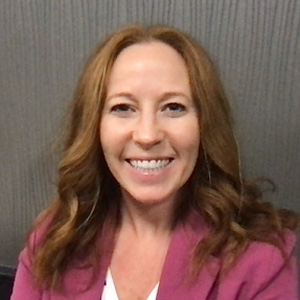Ten Things I’m Doing After Listening to Sold a Story
Venters: Schools and educators need to rethink the way they teach reading and emphasize decoding, professional development and support for parents.

Get stories like this delivered straight to your inbox. Sign up for The 74 Newsletter
I didn’t expect a podcast to unravel parts of my professional identity — but then I listened to Sold a Story, an exposé of missteps in reading instruction and the inherent consequences.
What began as casual curiosity quickly became a mirror, forcing me to confront my assumptions, instructional choices, and even my complicity in how I’ve taught reading.
As I listened, I didn’t just hear a story. I heard a call to action. I found myself scribbling ideas, memories, and questions in the margins of my notebook. But more than that, I began drafting a list: not just of things I had to reckon with, but of steps I need to take now.
Here is a collection of those 10 actions — steps I’m committed to taking as an educator, learner, and advocate for students — told through lived experience. Listening is only the beginning. Change comes next.
1. Say goodbye to patterned texts as an indicator of reading success.
Patterned texts, also known as predictable or leveled readers, are books with repeated sentence structures that encourage students to guess words based on pictures or context, rather than decode them phonetically by sounding out words. These books offer false hope — to students, teachers, and families. Teachers must replace them with authentic, diverse texts that support decoding, build knowledge, and grow a love for reading rooted in real comprehension.
2. Flood schools with decodable text.
Decodable texts are carefully written to align with a phonics scope and sequence, allowing students to practice specific sound-letter patterns they’ve been explicitly taught. Teachers are making this happen: book by book, classroom by classroom. But it takes intention. It takes providing clear, aligned resources that match our core phonics program so that instruction remains explicit (clearly taught) and systematic (progressing in a planned, logical sequence). Decodable texts should not be an afterthought; they should be a foundation.
3. Keep past students in the present.
Just because students have progressed to the next grade doesn’t mean their learning gaps have disappeared. Literacy is key to unlocking so much potential: academic, emotional, and economic. How can educators support middle and high schoolers, families, and adult learners who were left behind? By using high-quality, age-appropriate materials in foundational literacy intervention for older learners.
4. Support parents and caregivers.
Parents are partners in literacy. Let’s equip them with the tools they need to understand how reading works, what to look for in their child’s progress, and how to support learning at home. Resources matter. Accessibility matters. Language matters. This includes translating materials, simplifying jargon, and offering clear guidance aligned to evidence-based reading practices.
5. Champion professional development—for all.
Educators’ responsibility doesn’t stop at students. We must continue to educate specialists, coaches, and leaders — anyone who touches instruction. Literacy is not just the job of the English Language Arts teacher. It’s a shared responsibility.
6. Prioritize science of reading training.
The “science of reading” refers to a vast, interdisciplinary body of research from education, neuroscience, and cognitive psychology that explains how children learn to read and why some struggle. Schools must invest in high-quality, evidence-aligned professional development specific to reading science. Not just one session: ongoing, job-embedded training that happens during the regular workday and that empowers teachers to refine their practice and advocate for what works.
7. Get involved beyond the school walls.
Organizations like The Reading League, a national nonprofit dedicated to advancing the science of reading, remind me that literacy is a movement, not just a mandate. Engaging with nonprofits, local coalitions, and national conversations helps build momentum for change that extends far beyond the classrooms.
8. Add to the research.
I’m pursuing a doctorate in educational leadership through Appalachian State’s interdisciplinary cohort. My research will honor students, teachers, and families — and will contribute to a body of knowledge that is student-centered, justice-driven, and grounded in evidence.
9. Focus on new teachers.
We must ask: How were they taught to read? How were they trained to teach others to read? And how will they transfer that knowledge into practice? There’s no room for outdated methods (such as cueing or three-cueing, which encourages guessing words based on context) or well-meaning misconceptions. Let’s start with the strategies that work.
10. Break the silence.
Let’s write. Let’s explain. Let’s connect. No one should stay quiet in the face of misinformation or misaligned instruction. Every conversation, post, and resource we share has the potential to shift hearts—and systems.
We can do better. We are doing better. But the work isn’t done. Sold a Story didn’t just reveal the gaps in reading instruction—it lit a fire in many of us to ensure this story doesn’t repeat itself.
And that fire? I plan to keep it burning.
Get stories like these delivered straight to your inbox. Sign up for The 74 Newsletter

;)
